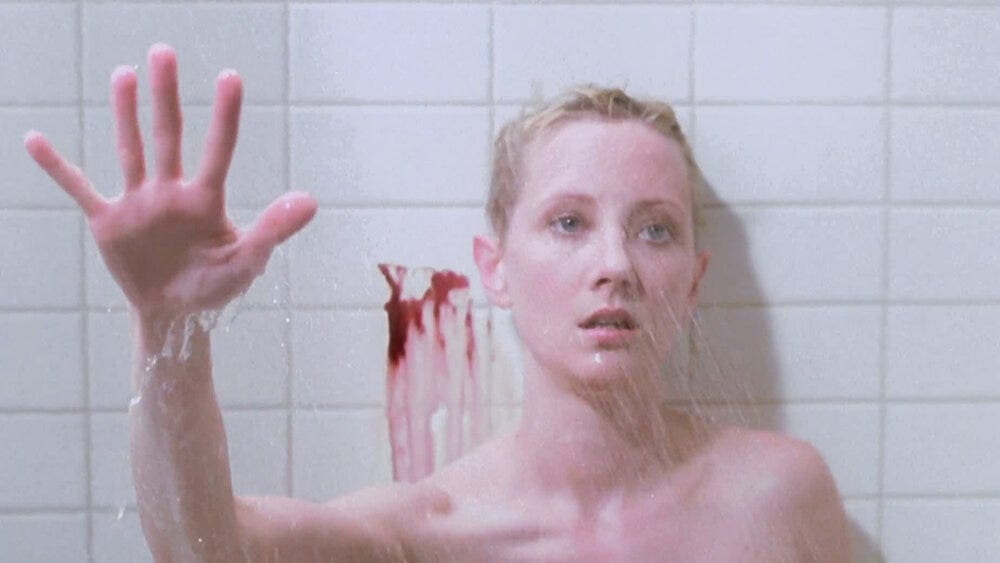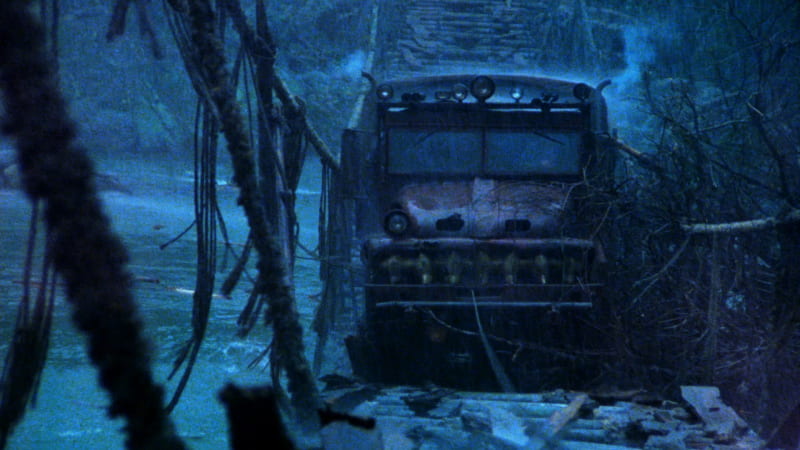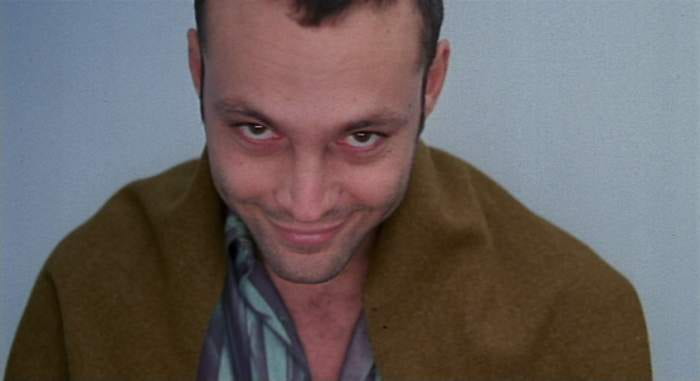
A new Marion Crane for a new Psycho
Using examples from such luminaries as William Friedkin and Steven Soderbergh, Chris Forrester discusses three different kinds of remakes and what their filmmaking approaches bring to the table.
IU Cinema’s series Re:Made parses the nature of the remake by screening pairs of films — inspiring originals and later reworkings — to explore evolving ideas, cultures, and modes of filmmaking. The programming of the series encompasses three main varieties of remakes that we might think of as distinct members of the same family. First, the remake, a direct lineage from original to remake in which one filmmaker tries their hand at the work of another, as in The Thing (Carpenter, 1982), a remake of The Thing from Another World (Nyby, 1951), and 3:10 to Yuma (Mangold, 2007), a remake of 3:10 to Yuma (Daves, 1957). Second, the re-adaptation, the (often) title-sharing sibling film that re-translates the same source material, with previous adaptations at most a secondary source of inspiration. Examples here might include Little Women (Gerwig, 2019) and Little Women (Armstrong, 1994), and William Shakespeare’s Romeo + Juliet (Luhrmann, 1996) and Romeo and Juliet (Zeffirelli, 1968). And third, the reworking, where an original text is a primary but not necessarily direct inspiration, and one filmmaker loosely reimagines the work of another. The programmed example here is Body Heat (Kasdan, 1981), an unofficial remake of Double Indemnity (Wilder, 1944), but we might also consider Brian De Palma’s Hitchcock films — Sisters (1972), Obsession (1976), Dressed to Kill (1980), Blow Out (1981), Body Double (1984), and Femme Fatale (2002), each inspired by and loosely adapted from some of the more celebrated films of the British master — or A Fistful of Dollars (Leone, 1964), which so closely and unofficially remade Yojimbo (Kurosawa, 1961) that the latter film’s production company won a lawsuit over its originality.
The trope re: remakes, and the thing that Re:Made seems aimed to push back against, is the notion that they’re never as good as their predecessors, limp reworkings rather than inspired reimaginings. In the spirit of the series, here are a handful of remakes worth loving or reconsidering:

The eponymous truck Sorcerer in Friedkin’s remake of Clouzot’s The Wages of Fear
The finest of all remakes, as far as I’m concerned, is William Friedkin’s white-knuckled, sweat-drenched The Wages of Fear (Clouzot, 1953) re-adaptation Sorcerer (1977). Largely buried upon release by the popularity of Star Wars (Lucas, 1977), which had released a month prior and amassed a fervor that ultimately spelled death for the New Hollywood movement, Friedkin’s The Exorcist (1973) follow-up has since gained appreciation as a stone-cold masterpiece of ferocious tension and existential anguish.
In Sorcerer, as in The Wages of Fear and the Georges Arnaud novel that inspired them both, four men beyond down on their luck find themselves stranded in squalor and extreme poverty in a small Colombian town, afforded only one chance at freedom: a supremely dangerous job transporting two trucks full of nitroglycerin 218 miles across hazardous terrain to quell the blaze of a burning oil well. Even a small vibration could cause the explosives to combust, and the trek is peppered with narrow, rocky roads, torrential downpours, rickety rope bridges, and roving bandits. As if he hadn’t wrought enough terror with The Exorcist, Friedkin wields the tense set-pieces of Sorcerer’s source material for maximum suspense, constructing in the process a number of the most indelibly stomach-churning sequences in the whole of Hollywood cinema.

A familiar but unfamiliar smile in Gus Van Sant’s Psycho
Of perhaps more contentious consideration is Gus Van Sant’s Psycho (1998), a remake of, yes, the Hitchcock classic of the same name, the progenitor of the contemporary American horror film and a film of such towering significance that all its imitators and descendants, even distant, live forever in its shadow. And yet, there’s something about Psycho worth rethinking.
Often dismissed as more of a lame experiment than a remake, Van Sant’s version of Psycho is usually noted as a shot-for-shot remake. This is largely true, but reductive and incorrect on two levels: first, it’s a shot-for-shot remake lensed by the inimitable Christopher Doyle (Chungking Express, In the Mood for Love, Hero, Lady in the Water), whose work (in color) lends it a very distinct appearance of gently tacky excess. Second, and more significantly, it does diverge from the original in small but key narrative and visual ways, splicing images of thunderclouds into the famous shower sequence and making more explicit the sexual component of Norman’s voyeurism by showing him masturbating as he watches Marion through a peephole.
While largely faithful to the narrative beats of Hitchcock’s film, Van Sant’s Psycho is a sly exercise in camp, recognizing the inherently queer — for better or worse — bent of the material and restaging it as a knowing, winking drag performance of a canonized classic. It’s less the kind of remake made to offer a definitive or alternative presentation of its material to a new audience so much as a supplemental or subversive remake meant to make the same audience reconsider a classic.

A spacecraft approaches the research station over the planet Solaris in Soderbergh’s remake
Of similar merit is Solaris (Soderbergh, 2002), the third adaptation of Stanislaw Lem’s novel of the same name and the first to do so in the shadow of Andrei Tarkovsky’s 1972 adaptation, widely considered one of the great science fiction films. As do many great remakes, Soderbergh’s strikes the correct balance of fealty and independence, spinning from the basis of Lem’s novel — which finds a psychologist sent to a space station orbiting the mysterious planet Solaris to investigate strange proceedings — a rather shattering meditation on trauma and memory that operates within the director’s familiar milieu of domestic psychodrama.
Where Tarkovsky’s film is one of elemental symbolism and probing considerations of the human condition, and Lem’s novel more concerned with describing first contact between humans and a truly alien being (the sentient ocean of the titular planet), Soderbergh’s re-adaptation finds a nice groove for itself by imbuing a film that often looks and moves like more straightforward genre fare with a pronounced sense of humanism, often to rather moving ends. In centering the broken romance at the center of the story, Soderbergh locates something new within well-trod territory — even if the beats are largely familiar, his study of a man stricken with grief for his dead wife and haunted by the notion that he may have “remembered her wrong” feels novelly poignant.
Solaris, with its iterations and reiterations of the deceased (who populate the space station, haunting its inhabitants), feels rich with potential for thinking about remakes, too. The emotional core of the film lies in its protagonist’s simultaneous horror and affection for the planet’s reconjurings of his lost love, each tainted by the way he’s remembered her; because her memory is accessible only through the veil of his grief over her suicide, her reborn self inevitably also commits suicide. Here, we might think of a remake as akin to one of the planet’s reconjurings: a new invocation of a remembered original, tainted by our memory of it, and either made or broken by the degree of our desire for that original.
The finest remakes, too, crackle with the intimacy that metaphor might imply; a remake like Netflix’s Avatar: The Last Airbender, where familiar material is merely rehashed by a new team, finds little of much worth in the actual act of remaking, where a film like Sorcerer or Psycho is enlivened by the sense of purpose afforded it by its maker’s interest in the material. Though Friedkin, Van Sant, and Soderbergh’s respective reimaginings of much-lauded classics may forge new — and at times alienating — paths, they are at least that: reimaginings.
Little Women (1994) and Little Women (2019) screen Friday, March 1, and Saturday, March 2, at 7pm, respectively, as part of Re:Made, IU Cinema’s series of remakes and originals. The Saturday screening of Gerwig’s film will be followed by a conversation on the role of ensemble casting in film between casting director Betsy Fippinger and Susan Kelly of The Media School.
The series previously featured The Thing (Carpenter, 1982) and The Thing from Another World (Nyby, 1951); 3:10 to Yuma (Mangold, 2007) and 3:10 to Yuma (Daves, 1957); William Shakespeare’s Romeo + Juliet (Luhrmann, 1996) and Romeo and Juliet (Zeffirelli, 1968); and Body Heat (Kasdan, 1981) and Double Indemnity (Wilder, 1944).